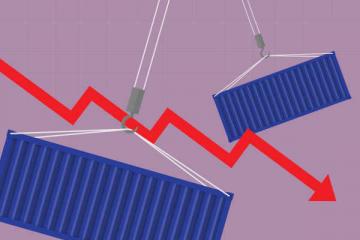Odds are your company is terrible at strategy.
One interesting benefit that I’ve gotten as a business professor is that I’ve seen thousands of companies in action as part of research, student capstone consulting projects, overseeing internships, reading adult student reflections and assignments in the MBA courses, working with public policy actors and other opportunities.
This has provided me with a unique insight: most companies have no strategy.
The worst industries are the ones that rely heavily on certifications and accreditations such as healthcare, higher education, advertising and finance. Companies in these industries tend to focus on their accreditations, certifications, and compliance, and then they make strategic plans. But strategic planning isn’t strategy.
I thought about this a lot as I rode to Alaska on my motorcycle. There’s something unique about riding 5,750 miles on an Italian mechanical work of art that gives you insights into how the world works, probably all the work it takes to make sure that ALL the pieces come together just right. You must have moment-to-moment riding attentiveness, plan stops for the infrequent gas stations and places to sleep, continuously monitor weather across thousands of miles, and watch for wildlife. But it isn’t enough to do all these things because your assumptions seldom go as planned—a change to weather, unexpected closure of a small gas station that’s 200 miles from the next re-fueling stop, unannounced road closures…
In other words, while planning is important, no amount of planning will ever guarantee that you get to your destination on time and without mishap. You must also have a bigger strategic vision. You must know your skills (or learn them if you don’t have them), you must have emergency equipment in case you have to spend a night in the wilderness, and—most importantly—you must know how to make decisions when the unexpected happens. Having rules that help you to understand your environment and to make the right decisions is the essence of strategy.
For a great example of the different between strategic planning and strategy, look no further than Russia’s invasion of Ukraine. It was very well planned with troops and resources allocated, yet Russia fundamentally didn’t understand how Ukrainians or the rest of the world would react—and they didn’t know how to make decisions when the plan didn’t go according to plan.
In other words, plans are about certainty, and strategy is about uncertainty. Which probably explains why most companies are lousy at it. It is really hard to understand both yourself and your market well enough to make accurate predictions. Most importantly, few disruptions result from a single cause and even fewer respond to single point solutions.
This is precisely the problem with strategic planning: it can only address discrete application of resources to single points. Managers like strategic planning because it focuses on factors under their control. But real professionals live out in the real world of customer markets and among the workers who interact with customers—they have a theory about cause and effect. This empowers them to embrace the uncertainty inherent in real-time supply chains.
What’s the remedy? Think slowly and take the time to make good decisions. When a crisis or disruption occurs, the impact of each decision amplifies along the supply chain. Bad decisions amplify bad outcomes. At the same time, good decisions amplify good (or at least less-bad) outcomes. Disruptions and chaos make leaders feel pressured to make a decision that yields quick results. Cool-headed leaders know that decisions made quickly under pressure nearly always fail to think through the consequences.
Nobody anticipated COVID, yet some companies managed to thrive. These companies focused on value—especially protecting margins over a revenue-mindset. Revenue generated by non-existent or even negative margins accelerate demise. Value resides in the customer, implicating the importance of market intelligence and deep capabilities to develop effective solutions quickly.
On my return trip of 5,750 miles to Rhode Island, I realized that I have to change the strategy that brought me successfully north. The weather has changed, I’ll be going from less to more densely populated regions, and I promised to stop and visit some people on the way back.
Good strategists continually evaluate the circumstances and adapt strategies on the fly based on the evidence. The headwinds of re-globalization, inflation, technological advances, inflationary pressures, labor shifts, COVID and monkey pox epidemics, and more frequent supply chain disruptions will quickly reveal which companies have good strategists.
SC
MR


Latest Supply Chain News
- Survey reveals strategies for addressing supply chain, logistics labor shortages
- Israel, Ukraine aid package to increase pressure on aerospace and defense supply chains
- How CPG brands can deliver on supplier diversity promises
- How S&OP provides the answer to in-demand products
- AI, virtual reality is bringing experiential learning into the modern age
- More News
Latest Podcast

 Explore
Explore
Latest Supply Chain News
- Survey reveals strategies for addressing supply chain, logistics labor shortages
- Israel, Ukraine aid package to increase pressure on aerospace and defense supply chains
- How CPG brands can deliver on supplier diversity promises
- How S&OP provides the answer to in-demand products
- AI, virtual reality is bringing experiential learning into the modern age
- Humanoid robots’ place in an intralogistics smart robot strategy
- More latest news
Latest Resources

Subscribe

Supply Chain Management Review delivers the best industry content.

Editors’ Picks





